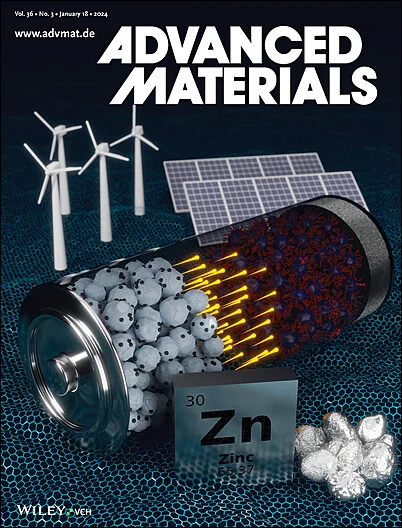Terahertz In‐Sensor Computing Utilizing Photothermoelectric Thin Films
IF 26.8
1区 材料科学
Q1 CHEMISTRY, MULTIDISCIPLINARY
引用次数: 0
Abstract
Terahertz (THz) detection is pivotal for biomedical diagnostics and security screening, enabled by its non‐ionizing nature and characteristic “fingerprint” spectra. However, weak THz–matter interactions, energy‐intensive processing, and complex hardware integration hinder its practical use. To this aim, a layered bismuth selenide (Bi利用光热电薄膜的太赫兹传感器计算
太赫兹(THz)检测是生物医学诊断和安全筛查的关键,其非电离性质和特征“指纹”光谱使其成为可能。然而,弱太赫兹物质相互作用、能量密集型处理和复杂的硬件集成阻碍了它的实际应用。为此,采用低温脉冲辐照合成(PIS)技术制备了基于硒化铋(Bi2Se3)的层状太赫兹探测阵列,该阵列具有可调谐的热耦合双向响应。固有的光热电(PTE)效应使传感器内太赫兹信号处理能够自适应,在自供电模式下,在0.3太赫兹下实现200 V W−1的响应率和<;5 ms的响应时间。集成在传感器计算通过实时噪声抑制,边缘检测和特征提取提高准确性。该阵列还具有很高的成像性能,对隐藏目标检测的召回率为90%。这项工作提供了一个可扩展的、高精度的太赫兹传感平台,具有生物医学和安全应用的变革潜力。
本文章由计算机程序翻译,如有差异,请以英文原文为准。
求助全文
约1分钟内获得全文
求助全文
来源期刊

Advanced Materials
工程技术-材料科学:综合
CiteScore
43.00
自引率
4.10%
发文量
2182
审稿时长
2 months
期刊介绍:
Advanced Materials, one of the world's most prestigious journals and the foundation of the Advanced portfolio, is the home of choice for best-in-class materials science for more than 30 years. Following this fast-growing and interdisciplinary field, we are considering and publishing the most important discoveries on any and all materials from materials scientists, chemists, physicists, engineers as well as health and life scientists and bringing you the latest results and trends in modern materials-related research every week.
 求助内容:
求助内容: 应助结果提醒方式:
应助结果提醒方式:


